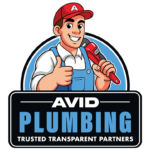How to Fix Common Toilet Issues Without Calling a Plumber
Fixing common toilet issues can sometimes feel overwhelming. But don’t worry; with a little guidance, you can handle many of these problems on your own. Not only will this save you time, but it will also keep a few extra dollars in your pocket.
Living in Tampa, Florida, we often face unique plumbing challenges. The high humidity and frequent storms can wreak havoc on our plumbing systems. That’s why it’s essential to know some basic fixes for everyday problems like running toilets, clogs, and more. Understanding these issues can help you maintain your toilet efficiently and prevent future problems. Let’s dive into some practical solutions to keep your bathroom in top shape.
Understanding the Most Common Toilet Issues
Knowing the common problems that affect toilets can help you diagnose and fix them quickly. One frequent issue you might encounter is a running toilet. This happens when water constantly flows from the tank into the bowl. It’s usually caused by a faulty flapper, the rubber piece that seals the tank and stops water from leaking out. A running toilet can waste a lot of water, which is not good for your utility bills or the environment.
Another common problem is clogging. A clog can occur when something blocks the flow of water and waste in the toilet’s drain. It’s often caused by flushing items that should not be flushed, like wipes or excessive toilet paper. Clogs can lead to water backing up and overflowing, which can be a messy and inconvenient situation. Understanding these issues is the first step to keeping your toilet working smoothly.
Step-by-Step Guide to Fixing a Running Toilet
Fixing a running toilet is simpler than you think. First, you should remove the tank lid and inspect the flapper. The flapper is typically a rubber plug connected to a chain that lifts when you flush, allowing water to flow from the tank into the bowl. If the flapper looks worn out or doesn’t seal properly, it’s time to replace it. You can find a new flapper at your local hardware store. Simply turn off the water supply to the toilet, remove the old flapper, and attach the new one.
Next, check the float and fill valve in the tank. Sometimes, the float might be set too high, causing water to overflow into the overflow tube. Adjust the float so the water level is about an inch below the top of the overflow tube. If the fill valve is the issue, you might need to replace it. Turn off the water supply, unscrew the old fill valve, and install a new one according to the manufacturer’s instructions. These simple steps should stop your toilet from running and save you a lot of water in the long run.
How to Unclog a Toilet Using Simple Tools
Unclogging a toilet can seem daunting, but with the right tools, it’s often a quick fix. The first tool you’ll need is a plunger. Make sure you use a flange plunger, which is designed specifically for toilets. Place the plunger over the toilet drain and push down gently at first to get a good seal. Then, use a vigorous up-and-down motion to create suction and dislodge the clog. Repeat this process several times if necessary.
If the plunger doesn’t work, try using a toilet auger, also known as a plumbing snake. Insert the end of the auger into the toilet and push it down the drain while turning the handle. This will help break up or retrieve the clog. Once you’ve cleared the blockage, flush the toilet a few times to ensure everything is flowing smoothly. With these simple tools, you can tackle most clogs without professional help.
Preventive Measures to Avoid Future Toilet Problems
Preventing toilet problems is much easier than fixing them. One of the simplest things you can do is be mindful of what you flush. Only flush human waste and toilet paper. Avoid flushing items like baby wipes, paper towels, sanitary products, and anything else that could cause a clog.
Regular maintenance also helps keep your toilet in good condition. Check the flapper, fill valve, and other internal components periodically to ensure they’re working properly. Fix small issues before they become big problems. Additionally, consider using a water softener if you live in an area with hard water, as mineral buildup can cause wear and tear on your toilet components over time. Taking these preventive steps can keep your toilet running smoothly and avoid unnecessary repairs.
Fixing common toilet issues doesn’t have to be stressful. By understanding the typical problems that can arise, such as running toilets and clogs, you can address them quickly and efficiently. Armed with the right tools and a bit of knowledge, many of these fixes are within your reach. Routine maintenance and preventive measures can save you from future headaches and help keep your plumbing in top shape.
Living in Tampa, Florida, adds its own set of challenges due to the weather and hard water conditions. Being proactive and addressing minor issues before they escalate can save you time and money. If you ever find yourself in a situation where a simple fix isn’t enough, don’t hesitate to seek professional help.
For more plumbing tips or if you need expert advice, contact AVID Plumbing. We specialize in both residential and commercial plumbing services across Tampa Bay. Whether it’s an urgent repair or routine maintenance, we’re here to help. Get in touch with AVID Plumbing today and keep your home running smoothly with affordable plumbing services.
